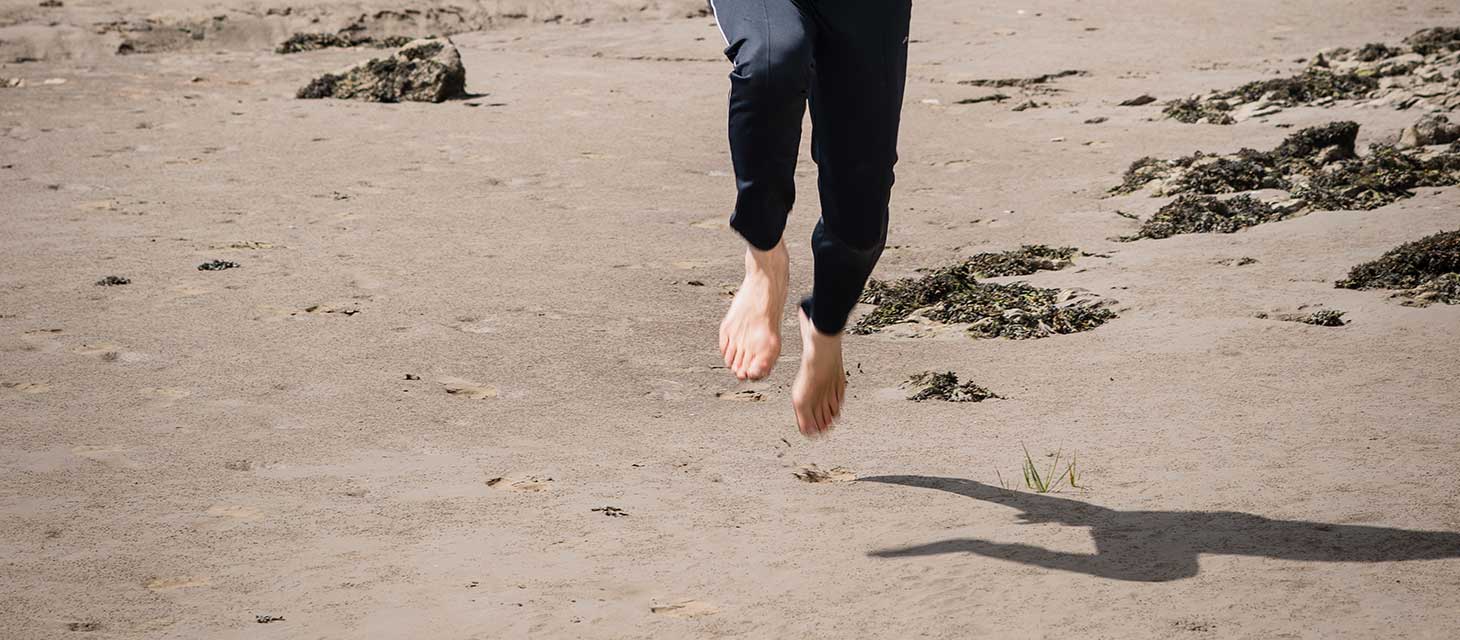The Natural Stride
The natural stride looks and is remarkably light easy and simple.
The natural stride
The natural stride looks and is remarkably light easy and simple. Over 25 years it has been refined to become economical and energy-efficient because it is passed through a Non-doing prism. The lens separates the stride into a sequence of seven moments-of-not-quite-yet, that is just before the next action happens.
Each of the seven phases generates a stand-alone base-move that forms the firm foundation upon which to build layer upon layer of challenge. The unique process is based on poised integrity. The neuro-systems that create poise and integrity do so by the efficient management of weight organized by the ingenious use of opposing forces. This extraordinary level of complexity requires the whole brain and not just the cortex!
A summary of the Natural Stride demonstration: The seven Phases
- Aligned support over the back-foot
- Forward transfer of weight
- Pre-action, the preparation or lead up to change of support. (In this action the back foot rolls up lifting the heel)
- Change of support. (This completes the action by raising the foot off the floor as it moves from heel-to- rump)
- Forward lunge: in which the centre of gravity leads the hip joint and forward leg-swing
- Leg swing
- Foot-Fall/Propulsion
Each segment processed through the Non-doing lens or prism ensures that gravity is fully used to achieve the action wherever possible.
The walking or running stance
The natural stride begins in the running or walking stance. One foot is set about a foot’s length ahead of the other. The feet are about hip- width apart and parallel to one another. Think of your head positioned in the walking and running stance in such a way that it aligns directly over the support of your back foot.
From the head to heel length of this starting point you can then move into Phase 2): You ease off the “parking-brake”. This begins with a loosening around the head and neck as you start to move your weight forward. You release into this move because the body above the knee is arranged to be topple-heavy. Your topple-heavy head begins the process in a head-to-toe progression. It is like a toppling tower falling forward. This initiates Phase 2) and Phase 3) of the seven segments of the natural stride.
A key base move
Phases 1), 2) and 3) create a base move which ends in a pose that you see in most statues in which:
- The weight is on the advancing leg.
- The rear leg is bent at the knee.
- The heel is raised and most of the foot has lifted from the floor.
The foot is poised on the ball of the foot preparatory to Phase 4 that will complete the action that lifts the foot off the floor.
The key importance of the foot knuckle or MTPJ in the foot is explored. This easy, poised and simple non-doing base-move achieves the following:
- It allows the hip joint to remain centred as it swivels forward.
- It allows the knee to freely swing to catch up with the advancing knee without a push.
- It articulates the hinge of the ankle joint freely (dorsi-flexion)
- It engages the toes so that the forefoot becomes the broadest possible surface area as it spreads and lengthens out into a supportive rocker-like surface.
And all for virtually zero energy. And all very dependent on the free articulation of the foot-knuckle!
